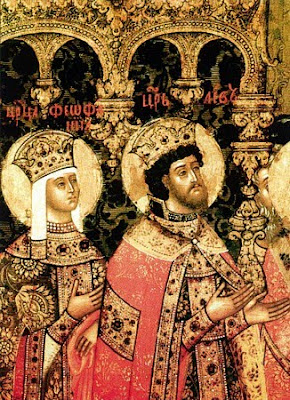
The Feast of All Saints, originally dedicated to the martyrs, achieved great prominence in the ninth century, in the reign of the Roman Emperor Leo VI the Wise (886-911). His wife, the Holy Empress Theophano (commemorated on December 16) lived in the world, but was not attached to worldly things. She was a great benefactor to the poor, and was generous to the monasteries. She was a true mother to her subjects, caring for widows and orphans, and consoling the sorrowful. Theophano devoted most of her days to prayers, psalms and hymns to God. She was reportedly the builder or patron of the Monastery of Saint Anastasia the Protector from Potions (Hagia Anastasia Pharmakolytria) in Halki island, the second largest of the Princes' Islands in the Sea of Marmara, near Constantinople.
Even before the death of St. Theophano in 893 or 894, her husband started to build a church, intending to dedicate it to Theophano, but she forbade him to do so. It was this emperor who decreed that the Sunday after Pentecost be dedicated to All Saints. Believing that his wife was one of the righteous, he knew that she would also be honored whenever the Feast of All Saints was celebrated.
According to tradition, it was Leo who expanded the feast from a commemoration of All Martyrs to a general commemoration of All Saints, whether martyrs or not.